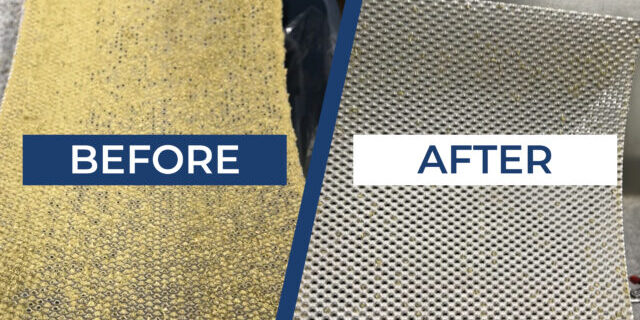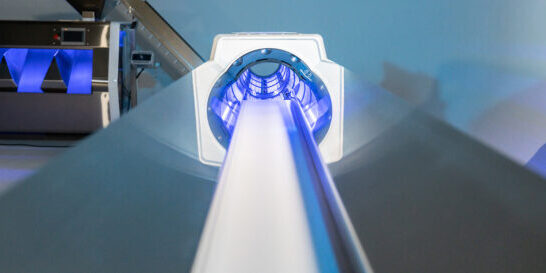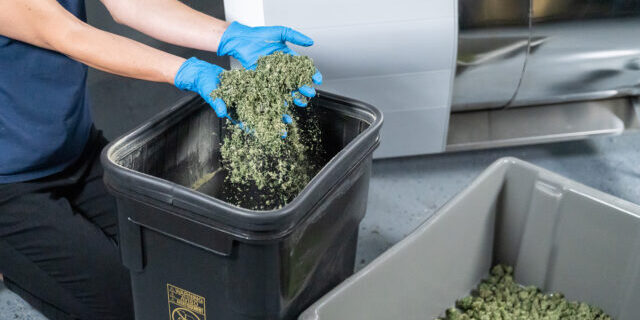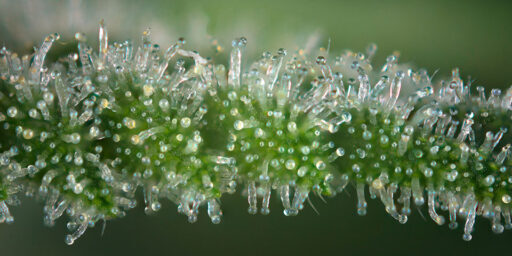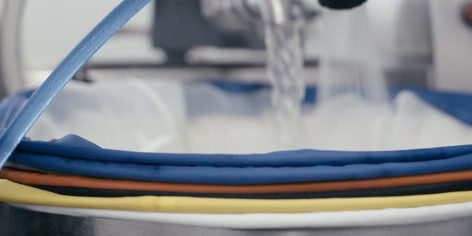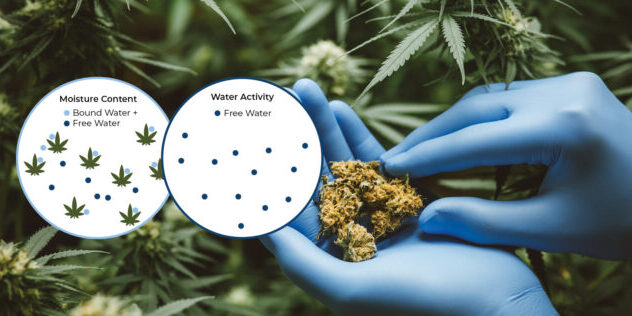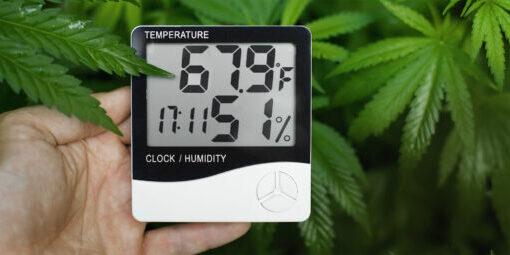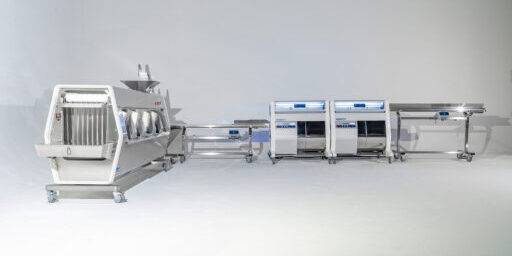The Benefits of a Cannabis Conveyor: Streamlining Your Cannabis Production Process
The cannabis industry is evolving at an incredible pace. From 2023 to 2030, the industry is expected to have a compound annual growth rate of 34%, growing in value from over $43 billion (USD) in 2022 to over $444 billion (USD) by 2030. As demand for cannabis products continues to grow worldwide, cultivators are increasingly searching for ways to scale their operations and capture a larger share of the market.
For many business leaders, a focus on efficiency is more important than ever. To stay competitive with other growers and reduce the time-to-market after harvesting, cannabis manufacturers need to streamline their processes. Often, this means investing in the right tools and equipment to enhance production.
While a cannabis conveyor system might not seem like the most innovative piece of machinery in your business, it can make a huge difference to your efficiency levels. Conveyors can work alongside trimming systems to boost production speeds, reduce labor costs, and preserve product quality through enhanced consistency and control.
If you’re considering purchasing a conveyor or looking to get the best results from one you already own, here’s what you need to know.
Conveyors for Hemp and Cannabis: How Do They Work?
A conveyor belt can play a valuable role in the cannabis production process. Essentially, it’s a mechanized solution that helps to move cannabis material from one location to another. Conveyor systems in the cannabis industry come in a range of different types.
There are standard belt-based systems, screw and chain conveyors, and even pneumatic conveyor machines. While the design of the system may vary, the best cannabis conveyors will always be designed with high-quality materials and exceptional control systems.
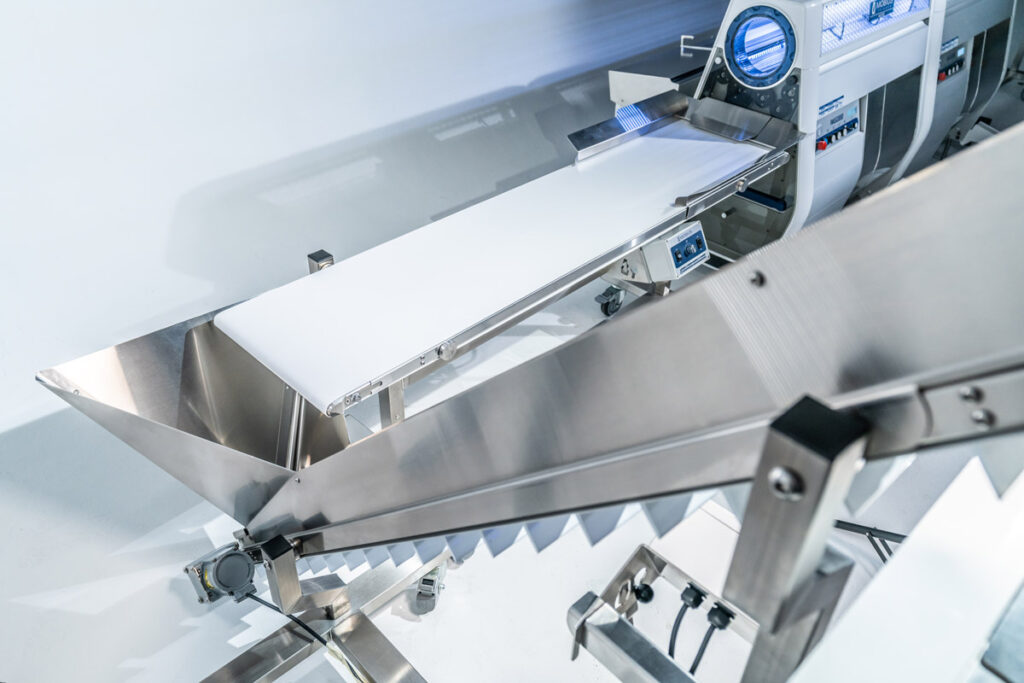
Mobius Conveyors, for instance, are constructed using food-grade materials, making them GMP-ready and safe to use in the production of consumable products. What’s more, these solutions are built to be used seamlessly with the Mobius Automation Suite, with no additional modifications required.
Conveyors can be used for a variety of purposes, including cultivation and harvesting, processing and extraction, and packaging and distribution, and they’re especially useful during post-harvest processing.
Cannabis Conveyors in the Trimming Process
Innovative solutions like the Mobius M108S Trimmer are designed specifically for use with conveyors to help optimize the production process.
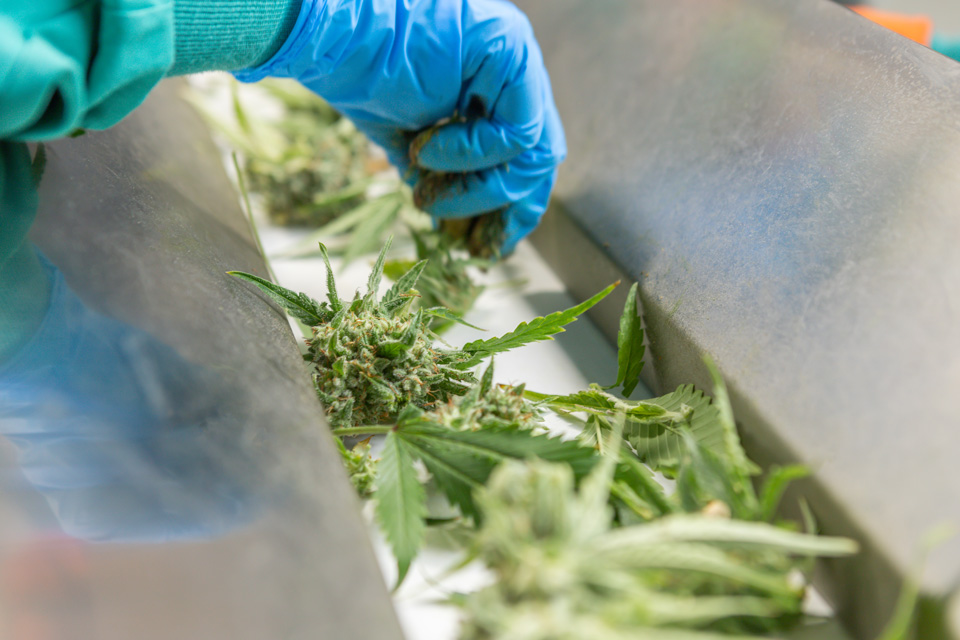
Commercial conveyors available from Mobius include the Infeed Conveyor, which efficiently feeds into the trimmer, and the Outfeed Conveyor, which allows for trimmed buds to be inspected immediately for the best quality control.
Additionally, the Autofeed Conveyor can connect to the Outfeed Conveyor and, after the quality control inspection, bring buds directly into the M9 for sorting.
Infeed conveyor systems, specially designed for cannabis trimming processes, are excellent for automating some of the most time-consuming aspects of cannabis production. This is crucial at a time when 65% of cannabis executives believe sales will increase in the coming years.
Cannabis Conveyor Applications
When used throughout post-harvest processing, cannabis conveyors allow companies to accelerate the process of taking their products to the market without compromising on quality or consistency. Their applications include:
- Trimmer infeed: Conveyors help to load your cannabis flower into the trimmer machine, with no gaps or pauses in the process. The result is a much faster operation, with a consistent feed rate and input speed into the trimmer, which helps improve the consistency of your trimmed buds.
- Trimmer outfeed: Conveyors can also help to move trimmed buds away from the trimming system in an organized and uniform manner. This helps professionals to quickly assess the quality of the product and spot flowers that may need a quick touch-up, or that do not meet standards.
- Moving flowers: Autofeed conveyors move flower from the outfeed conveyor to the M9 bud sorter for seamless and efficient production.
Advantages of Using Cannabis Conveyors
Conveyors can deliver a number of benefits to the cannabis production process. Easy-to-use automated systems reduce the strain on your teams while ensuring you can produce larger batches of products ready for sale as your business scales.
The main benefits of using cannabis conveyors include:
Increased Efficiency
Simply adding a conveyor system to your trimming process can drastically increase your processing speed without the issue of higher labor costs.
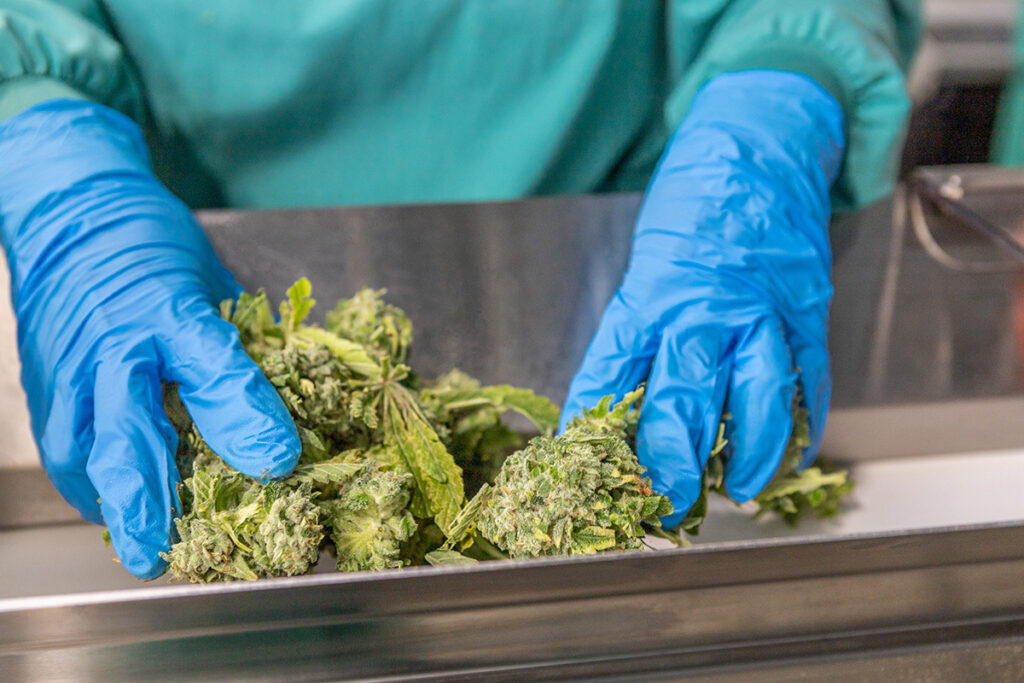
With conveyors automating the process of moving products through your trimming system, you can accomplish more with the same number of employees. Your existing team will spend less time manually feeding systems and more time focusing on quality control.
What’s more, with intuitive solutions that offer variable workflow settings, companies can quickly adjust their system configurations to fit their changing needs over time. This makes it easy to quickly adapt to changing trends in the industry and the evolving requirements of your products.
Consistency and Quality Control
In the cannabis industry, consistency is crucial to earning consumer trust. Despite the fact that 74% of growers say hand-trimming is a significant post-harvest challenge, they continue to prepare their buds using this time-consuming and inefficient method. However, with an automated trimmer and conveyor system, companies can improve the consistency of their products without compromising on scalability. Combining a conveyor system with the Mobius M108S allows plant material to be fed into the trimmer at a consistent pace without any breaks, gaps, or pauses.
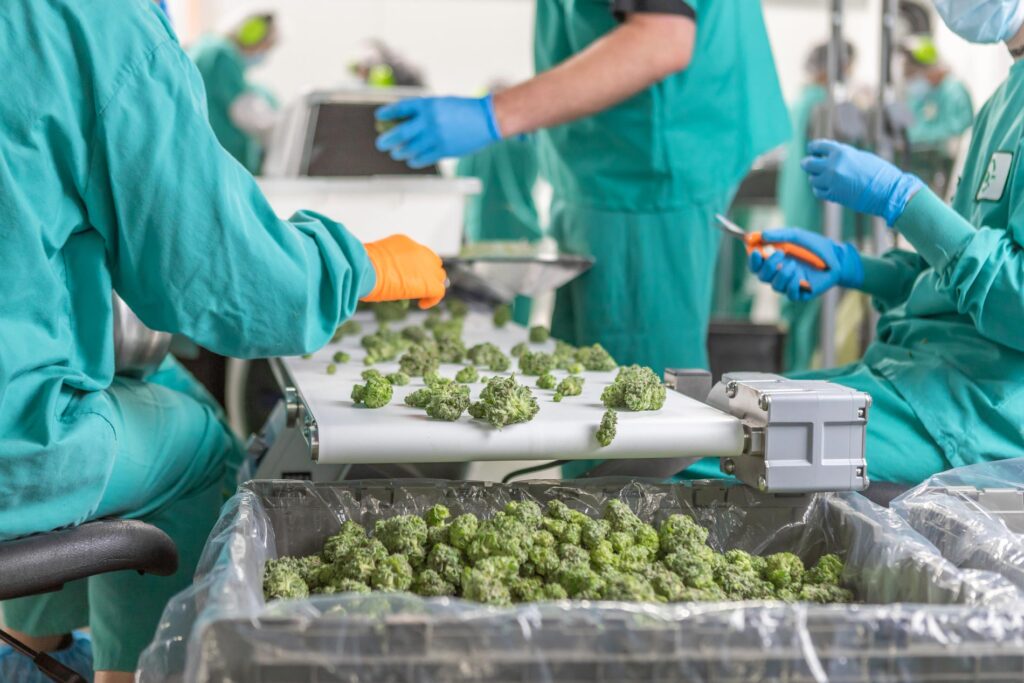
When there’s a break in the feed of material in the trimming process, such as a pause between employees placing handfuls of flower into a machine, the amount of time each batch spends in the trimmer is altered. This can lead to inconsistent trims across different harvests or even in the same batch, or a trim that is too tight or not close enough.
To get the best results, operators have to pay close attention to how much material they’re feeding into the machine. After a few hours, even the most detail-oriented employees become less consistent. A conveyor solves this problem, making it easy to produce consistent results and keep a continuous feedstock of flower to the trimmers.
Better Trichome Preservation
With regard to quality control, a conveyor system used during the trimming process can also improve trichome preservation, enhancing the flavor and potency of the product. According to Deloitte, 37% of US consumers say flavor is the most important factor in deciding what cannabis product to buy.
The flavor of your product is influenced by its terpenes and trichomes. While the cultivation process can influence trichome levels, the way you process your flower also has a role to play. For instance, without an outfeed conveyor on a trimming system, the material is often dropped into a bag for later inspection.
This method has two drawbacks. First, it creates an extra task to be performed at a different time at an additional workspace. In the case of wet trimming, it’s an extra step that delays the entry of the product into the drying room. Fresh products would ideally enter the drying room as quickly as possible to retain maximum potency and go through the quality control check at the optimal temperature.
Secondly, dumping the product into a tote may degrade the flower. Every time a flower is handled, trichomes have a higher chance of rupturing or breaking, and quality is lost. With a setup that collects the trimmed flower in a tote, the product must then be dumped out again and spread evenly for inspection. An outfeed conveyor allows you to skip the tote and enables a gentler, trichome-friendly process for quality control. As the trimmed buds exit the trimmer, they are conveyed past operators who can inspect them with minimal handling and a higher level of accuracy.
Improved Productivity via Automation
The automation of repetitive processes has a direct impact on productivity in any industry. A Harvard Business Review study found that 90% of employees say automated solutions increase their productivity levels. Conveyor systems combined with trimming machines help businesses in the cannabis industry leverage the benefits of automation.
An inclined system, such as the Mobius Autofeed Conveyor, sets up the next step in your automation process by elevating the material using a gentle escalator system. At the increased height, the material is ready to go through a sorter.
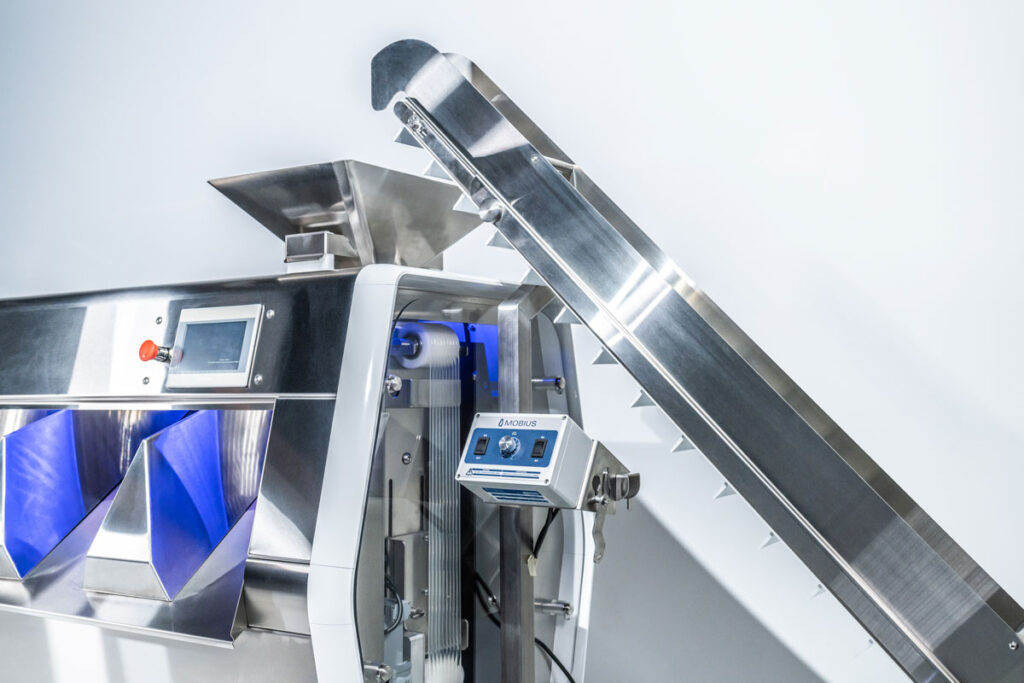
A sorter like the Mobius M9 moves trimmed flower across belts to be sorted by bud size. As the belts gradually widen, the smallest flowers fall through first, and the larger flowers drop through towards the end of the belts. As the flower falls through the belts, it’s separated by adjustable partitions for unlimited sorting size options.
Improved Compliance and Traceability
Many industries use conveyors for quality control with good reason: moving the product past the inspection technicians is a natural way to pace their work. Additionally, it provides an ergonomic setup for workers, limiting the amount of reaching, bending, and twisting needed to perform the task by bringing the material to them while controlling the rate of their activity.
An outfeed conveyor for cannabis and hemp presents the perfect opportunity for inspection and a quick hand trim when necessary. It spreads the flowers evenly across a moving work surface, allowing for rapid quality assurance tasks. With two or three technicians at the outfeed, you can complete all your processing and quality checks in one workflow.
Not only does this improve the quality of the end product, but it also ensures companies can adhere to compliance standards. According to a report from the cannabis industry, 52.4% of cannabis business leaders consider regulation and compliance to be their top challenge. A key component of cannabis production is detailed traceability. Conveyors and automated systems can help with this by providing chain of custody information, preventing handling by untrained personnel, and limiting exposure to contamination or improper storage.
The Future of Cannabis Conveyors
A conveyor system combined with an advanced trimming machine can take your business to the next level. Currently, conveyor solutions are growing more advanced, leveraging powerful tools for automation, and offering access to more advanced control systems.
Not only do cannabis conveyors help companies to produce more consistent and high-quality products, but they can also help these organizations to achieve compliance with crucial regulatory standards.
When cannabis is legalized on a federal level, GMP and other strict regulations will apply to all cultivators and manufacturers. That means your equipment will need to be compliant and ready to help you adhere to government regulations.
Mobius Conveyors, with their stainless steel construction and easy-to-clean surfaces, can help you stay compliant. The belts are easily removed for sanitation and internal inspection. Per GMP requirements, Mobius Conveyors discourage microbe growth, and they do not have crevices or cracks where material can become trapped and decay. Adding a conveyor system to your workflow can help you follow regulations, track and trace each piece of cannabis, and monitor every stage of production.
It’s time to take your production line to the next level. Contact a Mobius representative today and learn how our cannabis conveyors can put your profits on autopilot.
